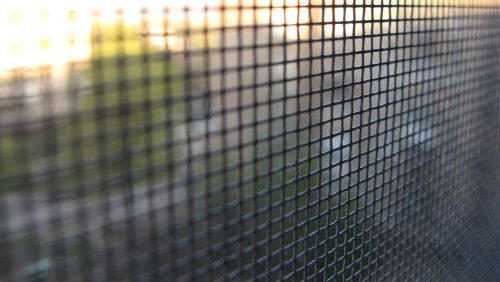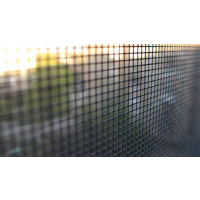What to consider when choosing a fly mesh screen

Opening your windows and doors is a freedom nobody should worry about. Let in the fresh air, feel the cool breeze and allow the natural light to shine through your home. The only issue is the aforementioned arrives into your property with some unwanted guests! Open windows and doors attract insects, pollen and all kind of unwanted material carried by the wind. Suddenly the cool breeze and the beautiful sunshine don’t seem worthwhile at the expense of mosquito bites and a sorry case of hay fever. One simple but common solution is the fly mesh screen. Fitting your home with the right mesh screen will keep out the bad and let in the good. Read on for advice on what to consider when choosing the right mesh fly screen for you!
Fixed and Retractable Fly Screens
Retractable fly screens are designed and installed in a way that allows them to be rolled out or folded away when not in use. The option to have your window open, yet no fly screen in place is available to you when a retractable fly screen is installed. You may wish to consider these more for doorways that are used as an entrance/exit, or for large windows that you wish to open entirely. Fixed fly screens on the other hand do not retract, they are permanent fixtures. Consider these for window areas that don’t need to be fully opened.
Which Works Best
When in place both fly screens perform their function expertly. No insect can infiltrate through the mesh whilst the cool breeze can. Your view remains intact and the pollen stays out. Both the retractable and fixed mesh screen can be easily cleaned and maintained through a simple wipe with a damp cloth. Both screens are durable by nature. Of course, some brands will be of a higher quality than others which is to be considered based on the intensity of your intended use. Nevertheless, both fixtures are a fantastic solution to the problems that can arise with a fully open window or door. Your thoughts are best spent deciding which windows and doors of yours require retractable and which are best suited for fixed.
Bushfire Attack Levels
Before installing your fly mesh screens, be sure to consider the BAL regulations of your area. If you live in a place prone to bushfires, then this must be communicated to whoever provides your flyscreens. If you are not aware of the bushfire attack level of your property, then it’s best to contact your local council. They will provide you a BALCATORGORY from BalLow through to BAL FZ dependant on your risk to bushfire. Each category has its own rules and regulations on the type of mesh screens your property is allowed to install. Please consider your BAL carefully prior to instalment. At the very best you’ll have to replace your fly mesh screens out of your own pocket. The regulations are there for your own safety.
| BAL Rating | Risk | Requirement |
| BAL Low | Very Low Risk | Has no special requirements for screening windows. In this area any product can be used. Fibreglass would be the most commonly used product. |
| BAL 12.5 | Low Risk | Has an option for screening windows and doors (other than sliding) using steel, bronze or aluminium mesh with an aperture maximum of 2mm and fitting gaps no greater than 3mm in diameter. Sliding doors are not required to be screened but if they are they should comply the same as other screens in the house. Aluminium mesh being the most common used product. |
| BAL 19 | Moderate Risk | Has an option for screening windows and doors using steel, bronze or aluminium mesh with an aperture maximum of 2mm and fitting gaps not greater than 3mm in diameter. Aluminium mesh being the most common used product. |
| BAL 29 | High Risk | Has an option for screening windows and doors using steel, bronze or aluminium mesh with an aperture maximum of 2mm and fitting gaps not greater than 3mm in diameter. Aluminium mesh being the most common used product. |
| BAL 40 | Very High Risk | Has an option for screening windows and doors using steel or bronze mesh with an aperture maximum of 2mm and fitting gaps of no greater than 3mm in diameter. |
| BAL FZ | Extreme Risk | Has an option for screening windows and doors using steel or bronze mesh with an aperture maximum of 2mm and fitting gaps of no greater than 3mm in diameter. |


